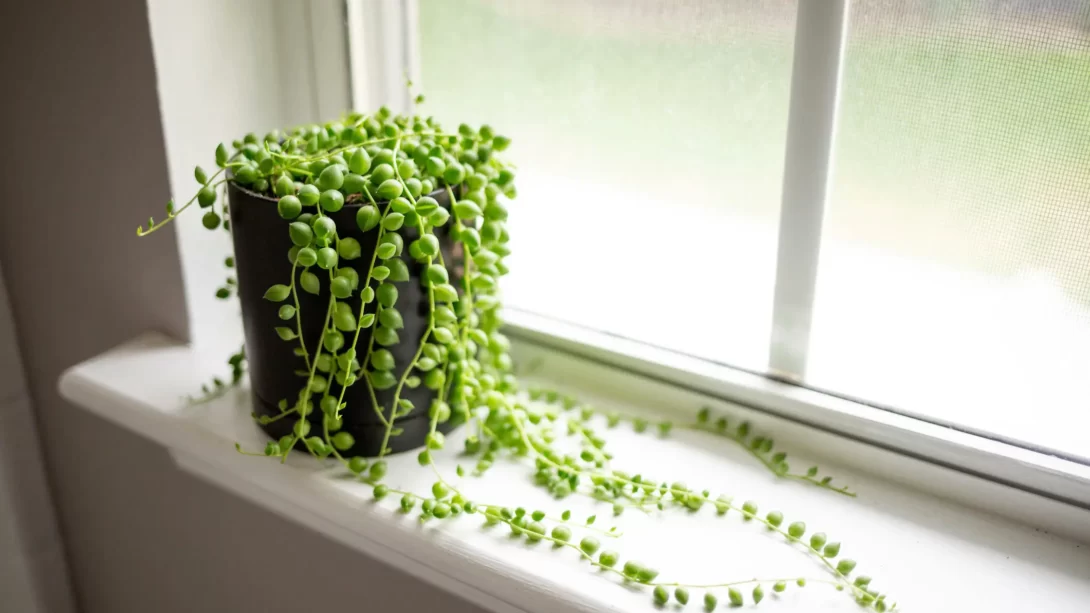The String of Pearls plant (Senecio rowleyanus), with its unique bead-like leaves, has become a popular choice for indoor plant enthusiasts. However, for cat owners, the safety of this plant is a critical concern. Cats, known for their curiosity and tendency to chew on plants, can be at risk if the String of Pearls is toxic. This article aims to explore the toxicity of the String of Pearls plant to cats and offer guidance for pet owners.
Characteristics of the String of Pearls Plant
The String of Pearls plant is distinctive for its cascading vines and spherical, pea-like leaves. It is often used in hanging baskets or as a decorative tabletop plant, adding a touch of greenery and visual interest to the home. The plant’s unusual appearance can be particularly enticing to cats, who may be tempted to play with or chew on the trailing vines. This natural curiosity raises concerns about the potential risks if the plant is toxic to felines.
Toxicity of String of Pearls to Cats
The String of Pearls plant is indeed toxic to cats. It contains a toxin that can cause gastrointestinal irritation and other health issues if ingested. The risk is not limited to ingestion; even skin contact with the sap can potentially cause irritation to cats. The plant’s toxicity stems from specific alkaloids and glycosides present in its leaves and stems, which are part of the plant’s natural defense mechanisms. If a cat ingests part of a String of Pearls plant, it can experience a range of symptoms that require immediate attention.
Symptoms of Poisoning in Cats
If a cat ingests the String of Pearls plant, it may exhibit several symptoms indicating poisoning. These can include vomiting, diarrhea, drooling, lethargy, and a noticeable decrease in appetite. In some cases, cats may show signs of skin irritation if they come into contact with the sap, such as redness, itching, or a rash. It’s crucial for cat owners to monitor their pets closely if they suspect that their cat has chewed on or ingested any part of the plant.
Responding to Poisoning
In the event that a cat shows symptoms of poisoning after interacting with a String of Pearls plant, immediate action is required. Remove any plant material from the cat’s mouth and clean any sap from the skin or fur to prevent further ingestion. Contact a veterinarian as soon as possible, as they can provide guidance on the necessary steps to take, which may include administering activated charcoal or providing supportive care. In severe cases, hospitalization may be necessary to manage symptoms effectively.
Preventive Measures for Cat Owners
For cat owners who wish to keep the String of Pearls plant in their home, several preventive measures can be taken to protect their pets. Placing the plant in an area that is completely inaccessible to the cat, such as on high shelves or in closed rooms, can be an effective strategy. Providing cats with safe, cat-friendly plants to explore can also divert their attention away from potentially harmful ones. Additionally, regularly trimming the plant to keep it out of reach and cleaning up any fallen leaves promptly can reduce the risk of accidental ingestion.
Safer Plant Alternatives for Homes with Cats
For cat owners looking to create a safe indoor garden, there are several non-toxic plant options that can be beautiful and harmless to pets. Some cat-friendly plants include Spider Plant (Chlorophytum comosum), Boston Fern (Nephrolepis exaltata), and African Violet (Saintpaulia). These plants are known for being non-toxic to cats and can add a similar aesthetic appeal as the String of Pearls. It’s always a good idea to double-check the safety of any plant with a reliable source or a veterinarian, as the list of cat-safe plants is not exhaustive.
Conclusion
In conclusion, while the String of Pearls plant adds a unique beauty to home décor, its toxicity to cats cannot be overlooked. The risks associated with ingestion or contact with this plant make it a potentially dangerous choice for households with feline friends. Recognizing the symptoms of poisoning and knowing how to respond can be crucial for the safety and health of your cat.
For those who share their home with cats, it’s important to prioritize their safety when selecting indoor plants. Opting for cat-friendly alternatives can ensure that both your pets and your plants can coexist safely and harmoniously. By creating a pet-safe environment, you can enjoy the benefits of indoor plants without compromising the well-being of your beloved feline companions.



